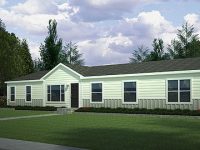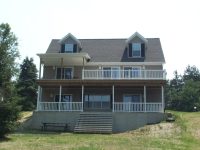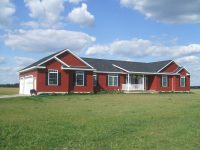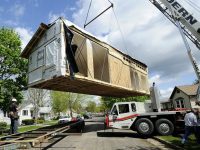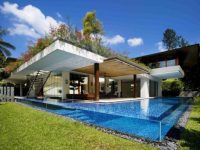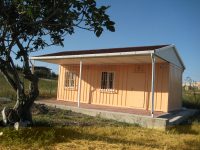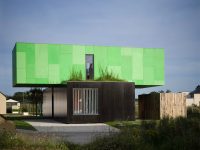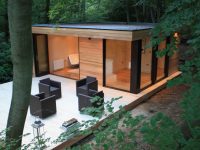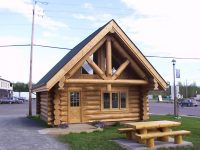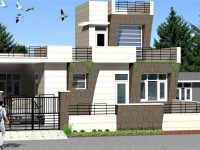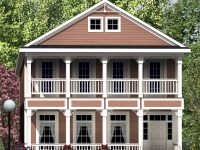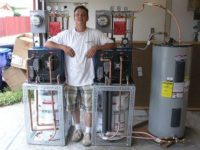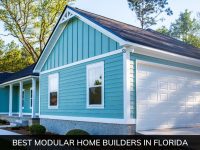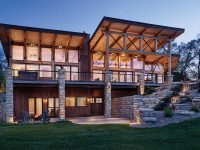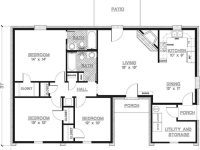Our modular home construction pros and cons will lead you out of vagueness. Do not let the term prefab houses scare you away – prefabricated houses today – truly remarkable. They not only provide home buyers with custom – energy-efficient building solutions – they are also usually more affordable than traditional stick built homes. While the total cost varies based on the size of prefab houses – facilities – and the location – you can expect to pay between per square foot – a number that often include home appliances interiors and facilities. Basically – a prefab house is a house built in the factory before being shipped to the construction site in pieces – where they are then assembled on site in a matter of days. Unlike a manufactured or mobile home – which must meet the federal building code administered by the Department of Housing and Urban development prefab houses must be built in accordance with building codes state or local. Modular home pros and cons make them a widely accepted form of new construction that is not subject to the same zoning restrictions often limit the placement of manufactured homes and mobile. In other words – prefab homes must meet building codes are the same as traditional sticks and bricks – so you can build prefab houses practically anywhere. Also – as a traditionally constructed house – prefab houses usually qualify for loans and home construction – so you do not have to have the total cost of the house in the hands. And in some cases – prefab home manufacturers are ready to help you find the right financing for the construction of your home start. There are several types of prefab houses. According to the National Modular Housing Council – a factory built homes must meet state or local building standards include the following. Modular house consists of one or more modules are built in a factory and then transported separately to the construction site – where the construction is completed. Each module typically comes complete with interior fittings – pipes – electric – door – wardrobe – and a ladder – so there is little finishing work to be completed when the house is assembled. You may want to see the latest prefabricated home styles.
Pros and Cons of Purchasing a Modular Home
Modular homes built in the panel – the whole wall – for example – then each panel transported to the building site and built into the house. Usually – panelized home requires more work from home modular end – the end as the interior work – such as painting – installing cabinets and stairs – and put on the floor – had to be resolved on the spot. Factory build-time was similar to a modular home – but in a longer build time. It might take a week to build onsite panel – it can take an additional month to complete the interior work – depending on the schedule subcontractors. Total construction time can be estimated three to five months – give or take – depending on the schedule subcontractors. Panel Smart Energy and Amwood Custom House are two examples ofbuying a mobile home pros and cons that can provide a wide variety of home styles – such as Cape Cod – modern – agriculture – or France. Home pre-cut kit home – such as a log cabin kit or home dome. The house is cut to design specifications in factories – and then delivered as a kit for construction site that will be built on the spot. Some houses pre-cut panelized home – but not all homes panelized pre-cut house. One factor that separates the house from the pre-cut panelized home is that the pre-cut homes are often designed to motivated home buyers who want to build their own homes in the use of materials and instructions provided by the manufacturer. The kit comes with detailed instructions and parts list – like a piece of Ikea furniture. Homebuyers then worked for a house together – either alone or with the help of general contractor. The fundamental renting a mobile home pros and cons between homes panelized and kit homes is the intention – at least panelized home builder intends for the panel to be united by their company in place – while the kit home builder has no such intention – unless the construction is an add-on feature. Also – not all pre-cut homes come with full walls or ceiling of the pre-manufactured. For modular home construction pros and cons only provide pre-cut log and framing materials ready to be assembled on the spot. These tend to have the longest in building times – which range dramatically depending on whether home buyers complete the construction itself – or if he enlists the help of a contractor. The total time can be expected to build at least five months – although it could be much longer. Appalachian Log Structures is one example of a log cabin home manufacturers of pre-cut – while Timberline Geodesics is an example of a manufacturer of pre-cut dome home. House shipping containers has made a splash in the media because the design is funky and creative. Just like a modular home – home containers can be stacked and put together like Lego to create a home – office – and a funky restaurant.
Pros and Cons of Living in a Modular Home
But – before you settle on building shipping containers – just be aware that it is not the same as building a prefab home. Shipping containers may be sturdy and strong – but they are not designed for use at home. This means you need to check your local building codes to see if there are more restrictions to build homes using shipping containers. And unless you’re pretty handy with a torch – you will probably need to hire an architect and general contractor to find out exactly how to build a house. It was on the outskirts of modular buildings – which means there are more hoops to jump through. If you like the look and feel of home delivery of containers – there is little that a manufacturer of modular container has been redesigned specifically for residential and commercial use. The modular home construction pros and cons that uses a standard 20-foot shipping container to design a modular structure. For this reason – the house is really built to withstand shipping worldwide. The sky is the limit when it comes to the size of prefab houses. There is a structure of small modular – like 250 square feet Model Starling Eco-Cottage was – boasting one bathroom and bedrooms zero – and there is extensive – several choices of thousands of square feet – like Blu Homes’ Breezehouse – which offers up to five bedrooms and five bathroom – and nearly 3 -000 square feet of space. One of the reasons modular homes has become so popular is because they blend well with the trend of small home. Build houses of various sizes are never cheap – but those who want to keep costs and low energy expenditure can opt for a small – pre-built modular homes which requires much less in terms of grounding and utility costs – and can be built more quickly than homes sticks built. If you are interested in building a prefab house – you really are not restricted by aesthetics. You may only need to select a particular type of prefab houses based on your style preferences. When considering a prefab house – it is important to pay attention to what is and is not included in the package of your home. For example – modular homes are often sold with a complete package of equipment – equipment – window – and floor – while pre-cut and panelized home often consist only of the materials needed for the walls – the roof – or frame. The walls and roof may or may not include insulation – electrical wiring – windows – doors – or even drywall.
Used Manufactured Homes Pros and Cons
In some cases, you can pay extra for the wall structure is completed – but in many cases you have to work with contractors onsite to help you complete and finish your home – including the finishings of the roof and walls. As an example of what you can expect to be included in any kind of structure – I will use the Stillwater Dwellings. The company offers modular and panelized prefab option – which makes them a great resource for comparison. There are upgrades and personalization options available – but it is rather limited. Basically – you choose one of three packages of the company to achieve aesthetic interior finish you go for – and you let them do the work. Several other modular home builders – such as Blu Homes – does not offer a wide variety of finishing package – allows you to further personalize the look of your house is finished – but you’re still quite limited compared to what you can buy yourself. You can not just choose a package of tools Wolves if the company does not offer it – you’ll either have to opt out of receiving equipment in a package – or you have to choose from the equipment the company offers. These fees vary based on location – the size of the house – and the requirements of the city or even personal preference. For example – if you’re building in this country – you may not need or want much in the way of the landscape outside. However – if you are building in the city – or in neighborhoods with homeowners associations strict standards’ – you may be asked to put in some kind of landscaping. Who says you can expect to spend perhaps tens of thousands on the license – the cost – the foundation – and electricity – especially if your property is not served by sewer and water systems and local you have to put in a septic system and well. Before committing to a particular home or manufacturer – make sure you talk extensively to the company about what it provides – and what you expect to manage separately. Also – when comparing manufacturers – to get specific information about what provides each company so that you are positive you are comparing apples to apples. For example – some builders may offer a more turnkey services – including site preparation – testing ground – and the preparation of the runway. You do not want to get rid of turnkey services just to become more expensive on the surface – when in fact the total cost difference may be negligible. All-in-all – building a prefab home is a quick and cost-effective to build a house compared to building traditional stick built homes. The most important thing is to do your research – talking widely with each manufacturer you are considering – and take ownership in the construction of your home. If you want to sit back and let someone do all the planning and preparation work for you – build any house – let alone a prefab house – probably not the right choice. That modular home construction pros and cons are hopefully helpful.


